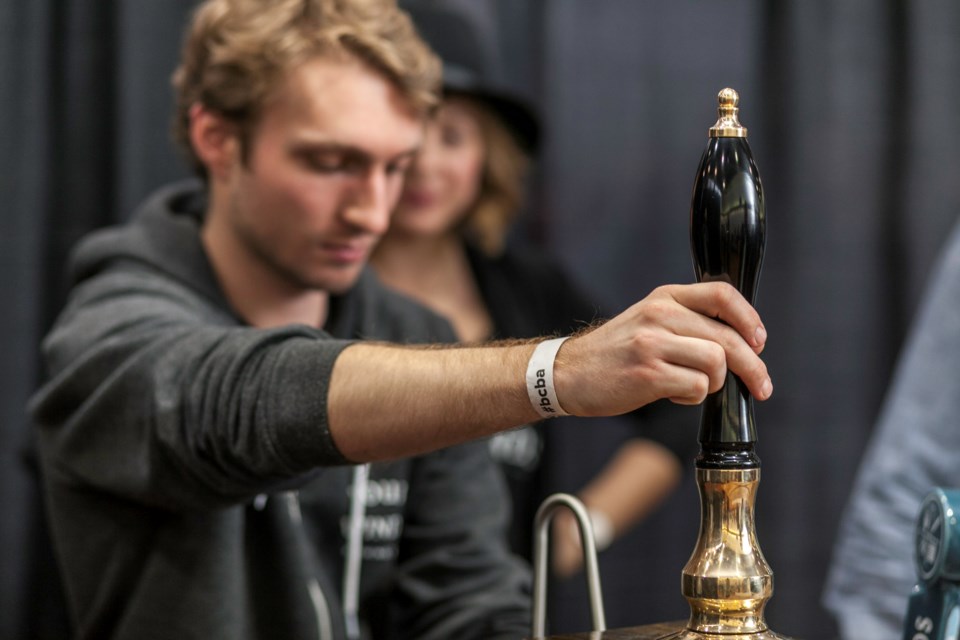There’s nothing like thousands of litres of delicious BC craft beer to bring people together. The seventh annual BC Beer Awards are set for Saturday, Oct. 15 at the Croatian Cultural Centre and this year 90 awards in 30 categories will be handed out, including the coveted Rookie of the Year (Last year it was Doan’s Craft Brewery) and the Best in Show (the reigning champ is Brassneck Brewery’s One Trick Pony Imperial IPA). Unfortunately, unless you already have tickets, you’re out of luck. This thing sold out ages ago.
The BC Beer Awards definitely have a different vibe than many of the other festivals on the ever-growing beer event calendar. For starters, it’s one of the few events in BC where beer is judged by BJCP standards, and it’s certainly the largest (the US-based Beer Judge Certification Program is like the American Kennel Club of beer, providing “breed” standards and training for judges).
Judging these beers is grueling work, as my predecessor documented last year. This year saw close to 800 entries, an increase of 200 over last year according to BC Beer Awards director Amanda Barry-Butchart.
“If your favourite brewery doesn’t at least win something, it’s probably because they didn’t enter,” she says. There’s even a category open to homebrewers, so us common folk can get in on the action, too.
Most of the breweries entered in the competition will also be on hand pouring samples for the crowd. That’s one of the other things that sets the BC Beer Awards apart; many of the brewers will be on hand for the event, so it’s a great opportunity to rub elbows with the people behind your favourite brands.
The coolest thing, though, in my opinion, is the annual style challenge. For the past three years, the BC Beer Awards have picked one specific style and challenged BC brewers to come up with their own versions of it (last year’s style was sour). It’s a fantastic opportunity to get a feel for the different philosophies and techniques of BC’s best brewers as they all work under similar style parameters. When forced to work within the constraints of the same style, some pretty creative expressions can result.
This year is the “Year of the Mild,” so brewers will taking on the traditional if underappreciated English pub ale.
“It’s a simple style, but it can be challenging,” says Barry-Butchart, adding that more than 30 entries have been submitted, many of which will be available for sample at the event.
The style is characterized by its low ABV and smooth, subtle flavor, a result of wartime grain rationing and taxation based on alcohol content. The style was popular in England through the ‘60s, but soon lost ground to the macro-lager invasion, and by the ‘80s and ‘90s, were largely considered an “old man’s drink.”
But while many BC brewers have sought to resurrect historic and obsolete styles in recent years, traditional ales have largely been left alone. (It is important to note, however, that Spinnakers and Swans, two of the first indie breweries in BC, began specializing in traditional ales, including the might mild.) Only a handful of BC breweries make proper cask-conditioned ales, and few bars are equipped with the hand-pulled cask engines required to serve them.
Which is a damn shame, if you ask Adam Chatburn (which I did). Chatburn is the former president of the Campaign For Real Ale (CAMRA) BC Chapter, and is currently the brains behind Real Cask Brewing, which operates out of Callister Brewing.
“They’re low ABV, they’re low hops, and they’re not very fizzy, so they don’t appeal to a lot of beer drinkers here,” says Chatburn. “But when they are done right, they are wonderful, easy-drinking, well-balanced and delicious.”
Chatburn grew up Blackburn, England, and named his Bastard Mild after rival soccer – ahem, football team, Burnley FC.
Thanks to the efforts of groups like CAMRA, which encourages pubs to keep traditional cask ales alive, the mighty mild has made somewhat of a comeback in its native England. Chatburn is hoping to convince Vancouverites to give mild a chance.
“I think IPAs will always rule the roost on the West Coast, but people’s tastes are maturing,” he says.



